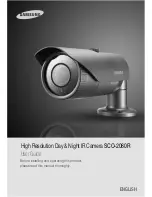
Doc. 20780_03
11
ADPRO Passive-Infrared (PIR) PRO Series by Xtralis
Planning and Commissioning Manual
In agricultural environments such as harvested fields, or deserts, there can be strong
winds, leading to drifts of pollen (from cereal crops), leaves (from forests) and
sandstorms. This too must be adequately taken into account when planning. In
particular, the barrier itself must be capable of withstanding these, and the mast for
the PIR detector must be free of torsion and vibration as far as possible. Because of
climate change, even more extreme weather is likely in continental Europe.
Walk Test in Winter
5.2.4
Geographical Position
The perimeter monitoring system is designed to project according to geographical location.
Installations on level ground are not critical for planning, but if there are structures on uneven
ground, care must be taken in case areas hidden by hills are not monitored; there may be
gaps in the detection area.
Modern tools such as Google Earth and Google Maps can be helpful in analyzing orientation
and environments.
5.2.5
Special Areas of Application (such as Hazardous Areas)
In sensitive areas, planning and execution of a perimeter monitoring system should take into
account any applicable laws, rules and regulations.
We are happy to help you with planning your system on request.
5.3
Design and Choice of Detector
5.3.1
A coherent design raises the cost to the intruder and puts
him at greater risk of discovery
The better the perimeter security is adapted to particular circumstances, the more effort is
required from a perpetrator. This is accompanied by the necessary criminal intent to commit
the deed; add to that the cost in terms of tools, know-how and time of overcoming a security
















































